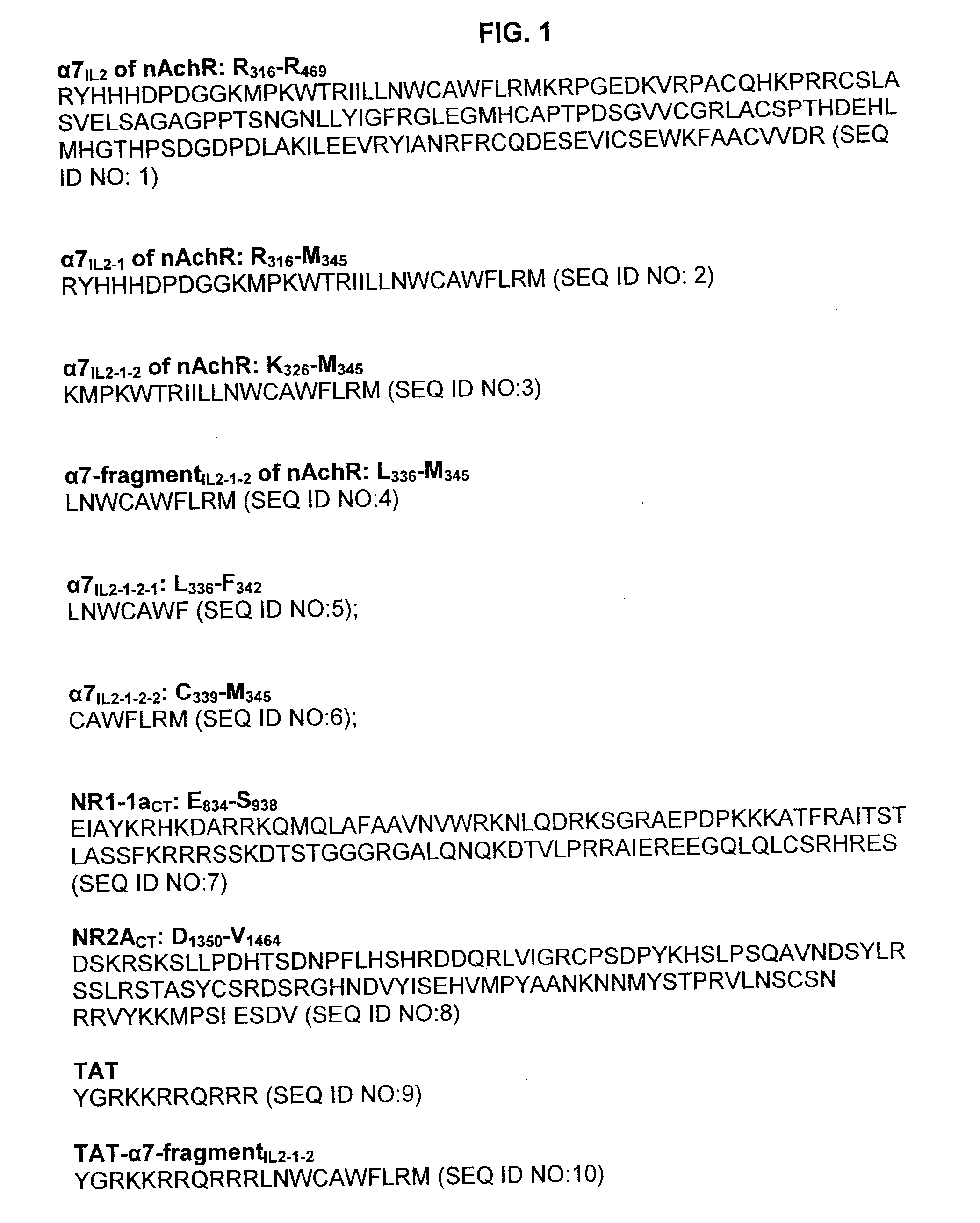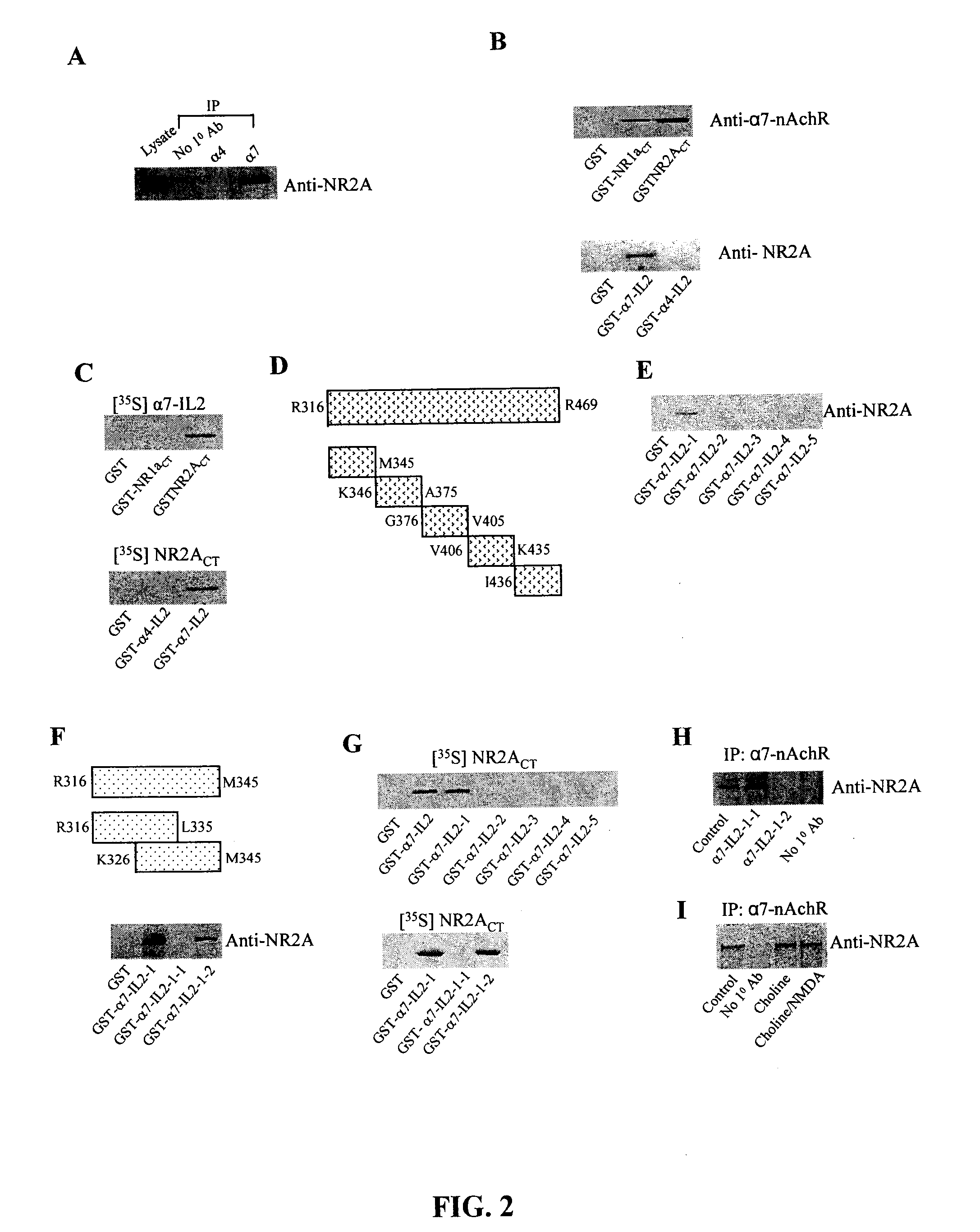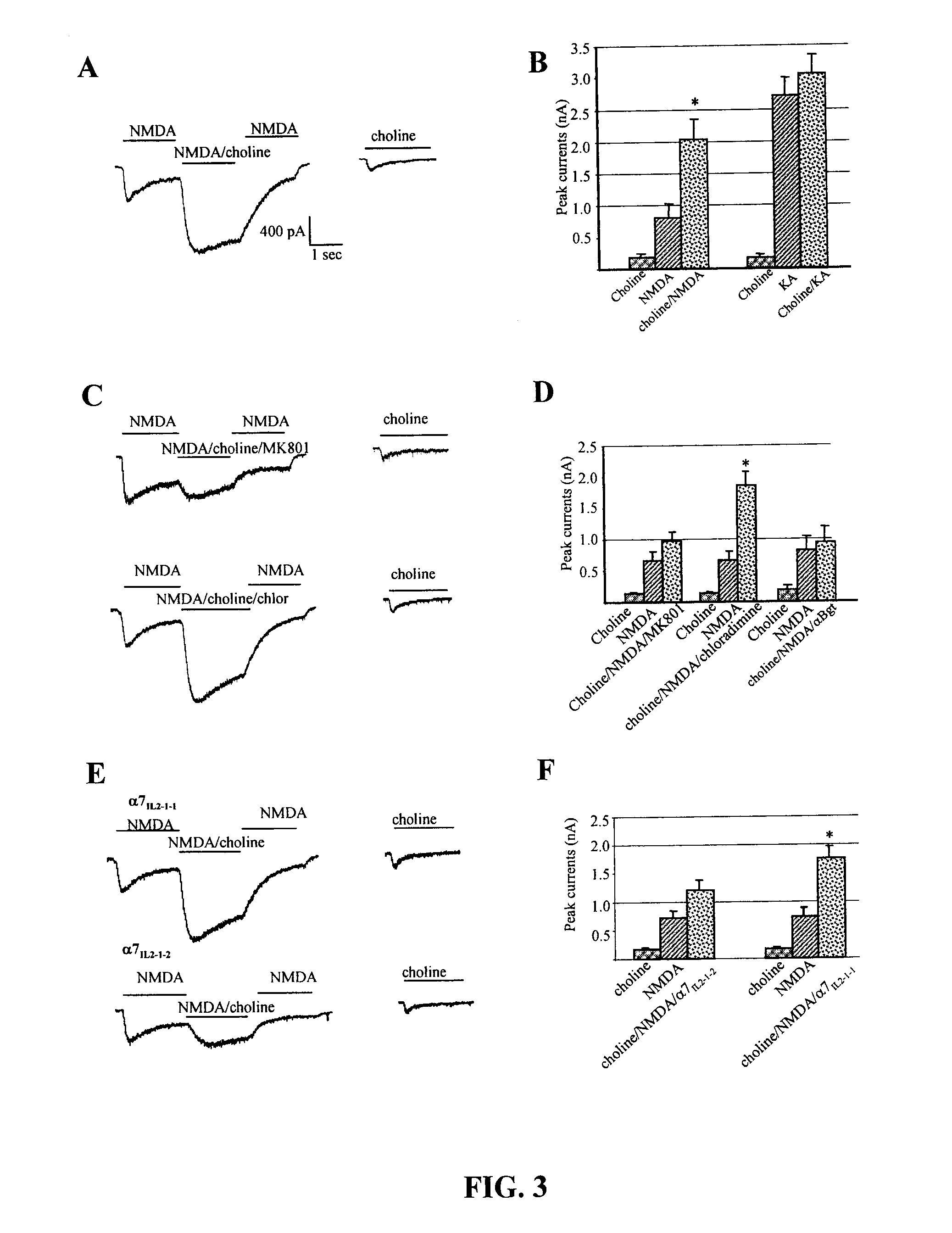Compositions and methods for modulating nicotinic/nmda receptor function
a technology of nicotinic/nmda receptor and function, which is applied in the direction of receptors for neuromediators, saccharide peptide ingredients, antibody ingredients, etc., can solve the problems of lack of product differentiation on the market, limited product efficacy of types of treatments, and users' health risks are considerabl
- Summary
- Abstract
- Description
- Claims
- Application Information
AI Technical Summary
Benefits of technology
Problems solved by technology
Method used
Image
Examples
example 1
[0087]α7 nAchR Co-Immunoprecipitates with NMDA Glutamate Receptors.
[0088]To determine the existence of α7: NMDA receptor complexes, we examined if α7-nAchR can co-immunoprecipitate with NMDA receptors in rat hippocampal tissue. As depicted in FIG. 2A, immunoprecipitation of α7-nAchR resulted in the co-precipitation of the NMDA receptor NR2A subunit suggesting a physical association between α7-nAchR and NMDA receptors. Both the carboxyl tail (CT) of the NR1 / NR2A subunits and the second intracellular loop (IL2) of α7-nAchR contain putative consensus sequences for receptor phosphorylation and potential binding sites for various proteins important for signalling [e.g. PSD-95, calmodulin] (24-25). To determine if the CT regions of NMDA receptors and the IL2 region of α7-nAchR are involved in the formation of α7-nAch: NMDA receptor complex, various glutathione-S-transferase (GST) fusion proteins, encoding the CT of the NR1a (GST-NR1-1aCT: E834-S938), NR2A (GST-NR2ACT: D1350-V1464 subunits...
example 2
[0089]IL2 Region of α7 nAchR Directly Binds with the NR2A Subunit of NMDAR
[0090]In vitro binding assay provided evidence that α7-nAchR and NR2A subunit can directly interact with each other. As shown in FIG. 2C (top panel), in vitro translated [35S]-α7-IL2 probe hybridized with GST-NR2ACT but not GST-NR1aCT or GST alone, indicating a direct protein-protein interaction between the α7 subunit of nAchR and the NR2A subunit and an indirect interaction between α7 and NR1-1a subunit, which may be attributed to the interaction between NR1-1a with the NR2A subunit. Similarly, [35S]-NR2A probe hybridized with GST-α7IL2 but not GST-α4IL2 or GST alone (FIG. 2C, bottom panel), confirming the specificity of the direct protein-protein interaction between α7-nAch and NR2A subunit of NMDA receptors.
example 3
[0091]Identification of Interaction Sites of the IL2 Region of α7 nAchR and the NR2A Subunit Complex
[0092]In order to delineate the region of the α7IL2 involved in the interaction with NR2A, five α7IL2 GST-fusion proteins (α7IL2-1; R316-M345, α7IL2-2: K346-A375, α7IL2-3: G376-V405, α7IL2-4: V406-K435, α7IL2-5: I436-R469) were constructed (FIG. 2D) and utilized in affinity purification assays. As shown in FIG. 2E, only GST-α7IL2-1 was able to precipitate NR2A, confirming that the α7 subunit can interact with NR2A through its IL2 region R316-M345. Using a similar approach, α7IL2-1 was dissected into two smaller fragments α7IL2-1-1: R316-L335 and α7IL2-1-2: K326-M345 (FIG. 2F, top). Affinity purification assays identified amino acids K326-M345 as the specific region of α7 that forms protein complex with NR2A, as shown in FIG. 2F (bottom) where GST-α7IL2-1-2 was able to precipitate NR2A while GST-α7IL2-1-1 and GST alone failed to precipitate NR2A from solubilized rat hippocampal tissue....
PUM
| Property | Measurement | Unit |
|---|---|---|
| Fraction | aaaaa | aaaaa |
| Fraction | aaaaa | aaaaa |
| Bond | aaaaa | aaaaa |
Abstract
Description
Claims
Application Information
 Login to View More
Login to View More - R&D
- Intellectual Property
- Life Sciences
- Materials
- Tech Scout
- Unparalleled Data Quality
- Higher Quality Content
- 60% Fewer Hallucinations
Browse by: Latest US Patents, China's latest patents, Technical Efficacy Thesaurus, Application Domain, Technology Topic, Popular Technical Reports.
© 2025 PatSnap. All rights reserved.Legal|Privacy policy|Modern Slavery Act Transparency Statement|Sitemap|About US| Contact US: help@patsnap.com



